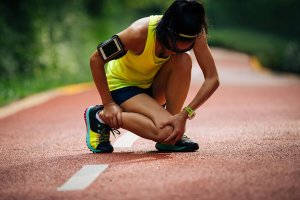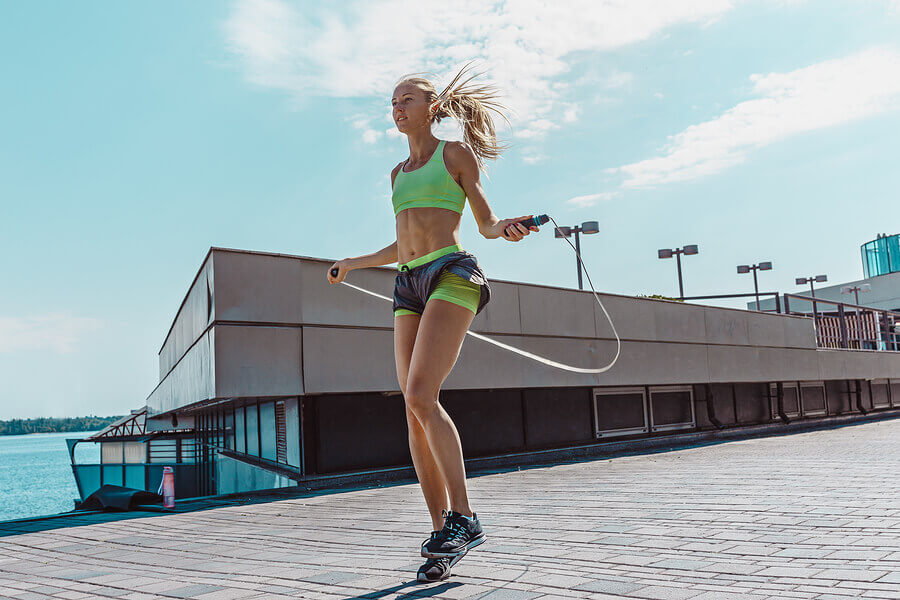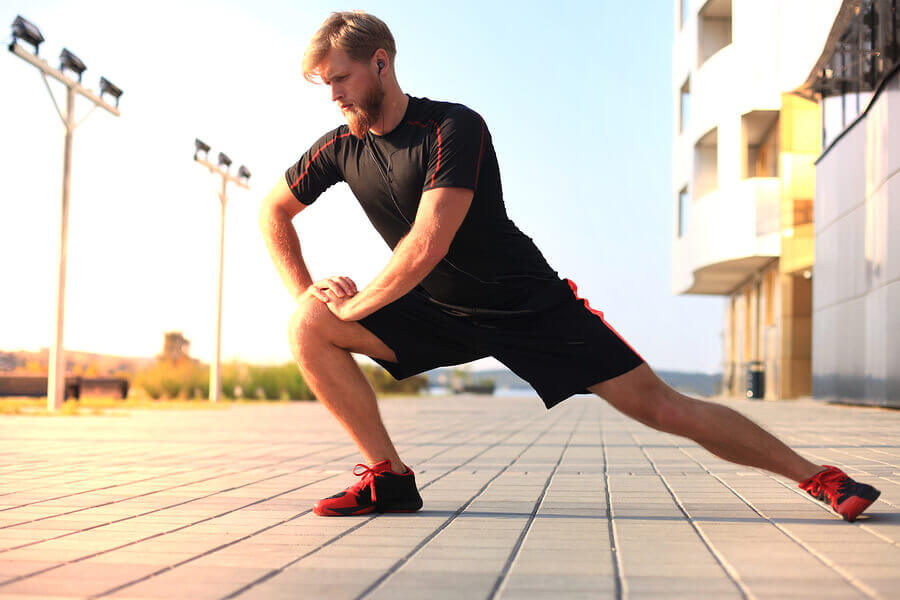Prevent Exercise-Related Injuries

Exercising is a great way to stay in shape and to know your physical limits. But injuries are always lurking around the corner and can interrupt your normal workout routine. Stay safe and read our post today. We have the best tips for preventing exercise-related injuries.
Progress always requires a certain level of intensity, which also implies an added risk of injury. Giving up any kind of challenging workout isn’t the answer as you’d lose all the benefits that come with it. But instead, take our tips into consideration.
In any case, injuries signal when something isn’t right. Considering what they can express, know your limits and never ignore pain when you’re exercising.
Warming up, stretching or progressively increasing the intensity of your workout are some examples of key steps for preventing an injury that can bring your exercise days to a halt. If you exercise regularly, you’ll understand that there’s nothing worse than being forced to stop. Taking that into consideration, keep our tips in mind to minimize your risk of injury.
The best tips for preventing exercise-related injuries
Here are our best tips for reducing your chances of hurting yourself during a workout:
1. Warm-up
A good warm-up is crucial for preparing your body for exercise. By warming up, your muscles can anticipate what’s to come. It gets your heart rate going and raises your body temperature. On top of that, warming up will help the blood flow to your muscles.
Plan a warm-up and stretch before your workout. Make sure you include cardiovascular exercises, such as running or jumping rope, for a good warm-up.

2. Increase workout intensity over time
Gradually building up your workout intensity is crucial for people who haven’t worked out in a while. But if you’re someone who works out regularly, gradual progression is still important for preventing injuries.
In addition to building intensity over time, you should also slow down gradually when you’re approaching the end of your workout.
3. Listen to your body
Pain is a siren: never ignore it and stop immediately if the pain persists. Furthermore, learn how to listen to your body and react accordingly to prevent injuries. Listening to your body’s signals is especially important if you’re a competitive athlete.
This tip revolves around knowing when to stop or when you can push a little further. On a different note, you should also rest sufficiently. Master the balance between rest and exercise to bring your muscles to their full potential for the next workout.
4. Stretch correctly when you finish exercising
Next, stretching after exercising to release muscle tension and reduce the risk of injury is crucial. As you stretch, you relax your muscles after putting them through a demanding workout.
In addition, a good stretching session can help you stay flexible and widen your range of muscle movement for a better workout. But keep in mind that you shouldn’t stretch a muscle after a workout if you feel pain.

5. Hydration: another key for preventing injuries
Physical activity implies water loss, and it could be an ongoing loss. The water loss is a result of sweating and regulates body temperature. It’s also a result of the body using its glycogen reserves to make the energy it needs to exercise.
Thus, drinking enough water is crucial for regulating your body temperature during exercise. It’s also very important for preventing fatigue or cramps. In light of that, make sure you drink plenty of water before, during and after your workout to avoid dehydration and the problems it could cause.
Exercise has plenty of benefits in store, but make sure you take the measures to stay safe at all times. Now that you know the best tips for avoiding injuries, apply them to your exercise routine. You won’t have to worry about injuries again!
Exercising is a great way to stay in shape and to know your physical limits. But injuries are always lurking around the corner and can interrupt your normal workout routine. Stay safe and read our post today. We have the best tips for preventing exercise-related injuries.
Progress always requires a certain level of intensity, which also implies an added risk of injury. Giving up any kind of challenging workout isn’t the answer as you’d lose all the benefits that come with it. But instead, take our tips into consideration.
In any case, injuries signal when something isn’t right. Considering what they can express, know your limits and never ignore pain when you’re exercising.
Warming up, stretching or progressively increasing the intensity of your workout are some examples of key steps for preventing an injury that can bring your exercise days to a halt. If you exercise regularly, you’ll understand that there’s nothing worse than being forced to stop. Taking that into consideration, keep our tips in mind to minimize your risk of injury.
The best tips for preventing exercise-related injuries
Here are our best tips for reducing your chances of hurting yourself during a workout:
1. Warm-up
A good warm-up is crucial for preparing your body for exercise. By warming up, your muscles can anticipate what’s to come. It gets your heart rate going and raises your body temperature. On top of that, warming up will help the blood flow to your muscles.
Plan a warm-up and stretch before your workout. Make sure you include cardiovascular exercises, such as running or jumping rope, for a good warm-up.

2. Increase workout intensity over time
Gradually building up your workout intensity is crucial for people who haven’t worked out in a while. But if you’re someone who works out regularly, gradual progression is still important for preventing injuries.
In addition to building intensity over time, you should also slow down gradually when you’re approaching the end of your workout.
3. Listen to your body
Pain is a siren: never ignore it and stop immediately if the pain persists. Furthermore, learn how to listen to your body and react accordingly to prevent injuries. Listening to your body’s signals is especially important if you’re a competitive athlete.
This tip revolves around knowing when to stop or when you can push a little further. On a different note, you should also rest sufficiently. Master the balance between rest and exercise to bring your muscles to their full potential for the next workout.
4. Stretch correctly when you finish exercising
Next, stretching after exercising to release muscle tension and reduce the risk of injury is crucial. As you stretch, you relax your muscles after putting them through a demanding workout.
In addition, a good stretching session can help you stay flexible and widen your range of muscle movement for a better workout. But keep in mind that you shouldn’t stretch a muscle after a workout if you feel pain.

5. Hydration: another key for preventing injuries
Physical activity implies water loss, and it could be an ongoing loss. The water loss is a result of sweating and regulates body temperature. It’s also a result of the body using its glycogen reserves to make the energy it needs to exercise.
Thus, drinking enough water is crucial for regulating your body temperature during exercise. It’s also very important for preventing fatigue or cramps. In light of that, make sure you drink plenty of water before, during and after your workout to avoid dehydration and the problems it could cause.
Exercise has plenty of benefits in store, but make sure you take the measures to stay safe at all times. Now that you know the best tips for avoiding injuries, apply them to your exercise routine. You won’t have to worry about injuries again!
All cited sources were thoroughly reviewed by our team to ensure their quality, reliability, currency, and validity. The bibliography of this article was considered reliable and of academic or scientific accuracy.
- Ayala, F., Sainz de Baranda, P., & De Ste Croix, M. (2012, June). Estiramientos en el calentamiento: Diseño de rutinas e impacto sobre el rendimiento. Revista Internacional de Medicina y Ciencias de La Actividad Física y Del Deporte.
- Urdampilleta Otegui, A., Martínez Sanz, J. M., Julia Sánchez, S., & Álvarez Herms, J. (2013). Protocolo de hidratación antes, durante después de la actividad físico-deportiva. European Journal of Human Movement, ISSN 0214-0071, No. 31, 2013, Págs. 57-76, (31), 57–76.
This text is provided for informational purposes only and does not replace consultation with a professional. If in doubt, consult your specialist.








